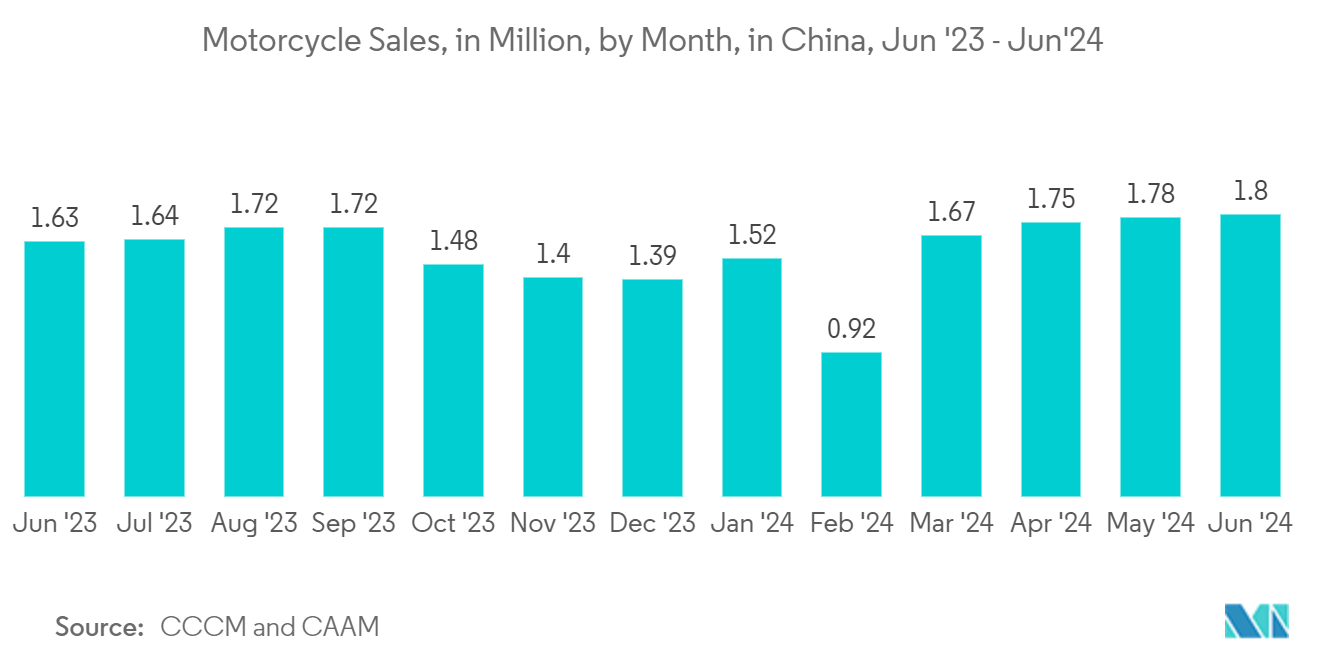Market Trends of China DC Motor Industry
The Automotive Segment to Witness Growth
- The automotive industry in China is poised to have a significant impact on the DC motor market, driven by its rapid growth and transformation. China, the world's largest automotive market, is experiencing an accelerated shift toward electric vehicles (EVs) and hybrid electric vehicles (HEVs), which extensively use DC motors for their operations.
- The number of electric car registrations reached 8.1 million in 2023, representing an increase of 35% compared to 2022. This transition is fueled by government policies promoting green energy and reducing carbon emissions, technological advancements, and increasing consumer demand for eco-friendly transportation solutions.
- The push toward autonomous driving technology further amplified the importance of DC motors in the automotive industry. Autonomous vehicles require precise control and high reliability, attributes that DC motors provide. These motors are used in various autonomous driving systems, including advanced driver assistance systems (ADAS), steering mechanisms, and braking systems.
- In May 2024, it was announced that Tesla is in the early stages of establishing a data center in China to train self-driving AI. The tech ecosystem in China is ripe for helping advance self-driving cars. As China aims to be a leader in autonomous vehicle technology, the integration of DC motors in these systems will contribute to market growth. Technological advancements in the automotive industry are also fueling the demand for advanced DC motors.
- Innovations aimed at enhancing the efficiency, durability, and performance of electric motors are gaining traction. In 2023, Chinese firms invested billions of dollars in the market, and these investments are shaping it. While challenges exist in terms of its geopolitical relation with Western counterparts and trade restrictions, the market's resilience and the continuous evolution of automotive technologies promise a vibrant future for DC motors in China.

The Water and Wastewater Industry to Drive the Market Growth
- The Chinese water and wastewater industry is undergoing a significant transformation spurred by the nation's swift urbanization, industrial growth, and heightened environmental consciousness. As one of the world's most populous nations, China grapples with immense pressure on its water resources, necessitating a strategic approach to managing both water supply and wastewater. This intensified focus on water management is reshaping the landscape for DC motors.
- Despite accounting for 21% of the global population, China only possesses 6% of the world's freshwater, yet it faces the largest volume of sewage discharge. The country's rapid urbanization and industrial expansion have posed substantial challenges to its municipal wastewater treatment, as the volume of wastewater directly correlates with urbanization rates. China's Ministry of Ecology and Environment projects that by 2025, rural life sewage treatment rates will hit 40%.
- Recognizing the urgency, China has significantly ramped up its investments in water infrastructure, spanning treatment facilities, pipelines, and reservoirs. As highlighted by the Ministry of Water Resources, these investments peaked at a record USD 167 billion in 2023.
- Looking ahead to 2025, China is set to embark on a series of major water network projects, with a focus on bolstering weak links in water resource allocation, urban and rural water supply, flood control, drainage, ecological protection, and the implementation of smart water networks. DC motors, pivotal in the water and wastewater industry, find widespread application in pumps, mixers, blowers, and other equipment crucial for processes like aeration and filtration.
- With the rising demand for efficient water treatment solutions, the need for high-performance DC motors capable of meeting stringent industry standards is also rising. In a bid to address water scarcity, China has set ambitious targets, aiming to raise the utilization rate of recycled water in water-stressed cities to over 25% by 2025. Additionally, the nation plans to establish 100 green, low-carbon benchmark sewage treatment plants by the same year.


